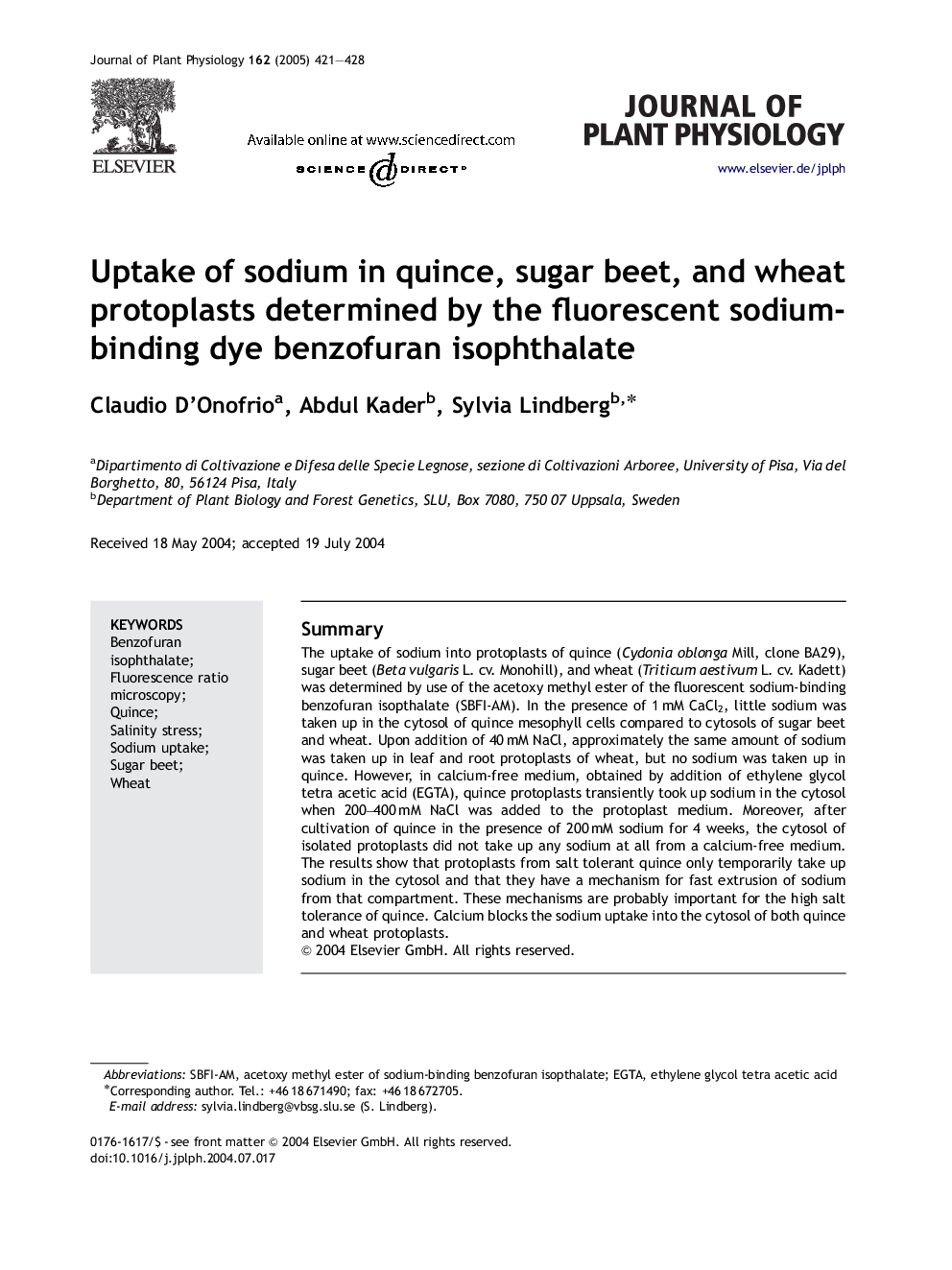| Article ID | Journal | Published Year | Pages | File Type |
|---|---|---|---|---|
| 10876989 | Journal of Plant Physiology | 2005 | 8 Pages |
Abstract
The uptake of sodium into protoplasts of quince (Cydonia oblonga Mill, clone BA29), sugar beet (Beta vulgaris L. cv. Monohill), and wheat (Triticum aestivum L. cv. Kadett) was determined by use of the acetoxy methyl ester of the fluorescent sodium-binding benzofuran isopthalate (SBFI-AM). In the presence of 1Â mM CaCl2, little sodium was taken up in the cytosol of quince mesophyll cells compared to cytosols of sugar beet and wheat. Upon addition of 40Â mM NaCl, approximately the same amount of sodium was taken up in leaf and root protoplasts of wheat, but no sodium was taken up in quince. However, in calcium-free medium, obtained by addition of ethylene glycol tetra acetic acid (EGTA), quince protoplasts transiently took up sodium in the cytosol when 200-400Â mM NaCl was added to the protoplast medium. Moreover, after cultivation of quince in the presence of 200Â mM sodium for 4 weeks, the cytosol of isolated protoplasts did not take up any sodium at all from a calcium-free medium. The results show that protoplasts from salt tolerant quince only temporarily take up sodium in the cytosol and that they have a mechanism for fast extrusion of sodium from that compartment. These mechanisms are probably important for the high salt tolerance of quince. Calcium blocks the sodium uptake into the cytosol of both quince and wheat protoplasts.
Related Topics
Life Sciences
Agricultural and Biological Sciences
Agronomy and Crop Science
Authors
Claudio D'Onofrio, Abdul Kader, Sylvia Lindberg,
